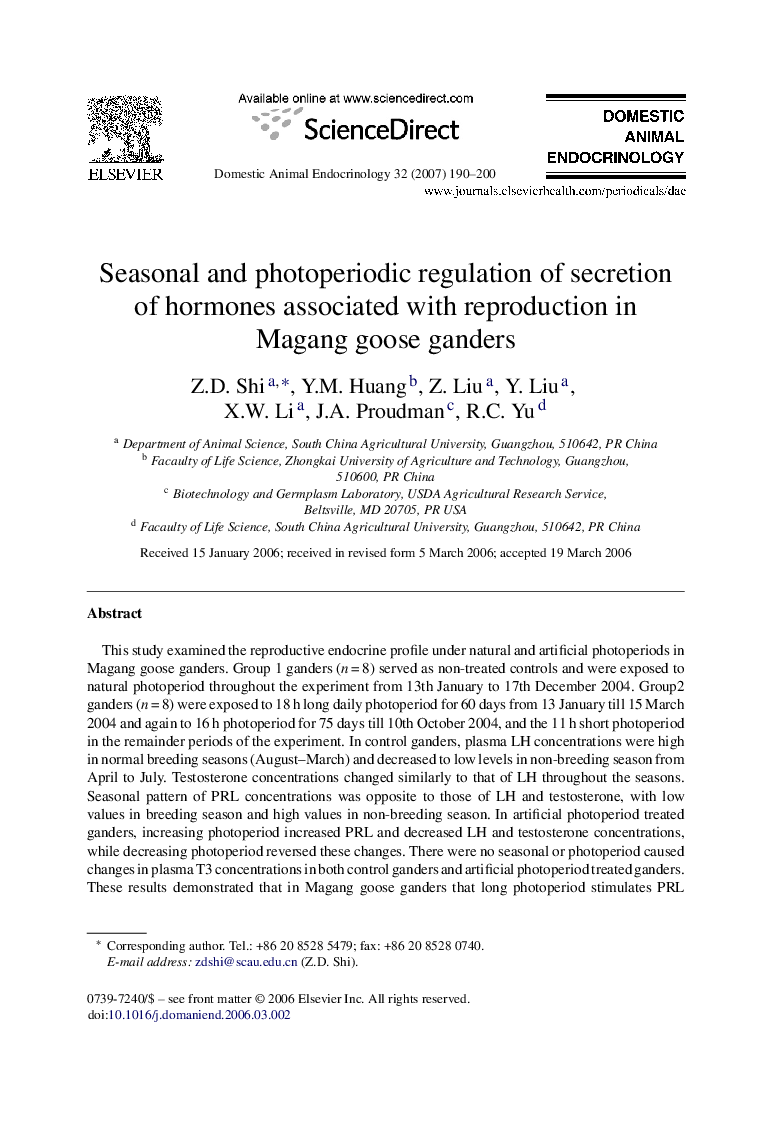| Article ID | Journal | Published Year | Pages | File Type |
|---|---|---|---|---|
| 2394218 | Domestic Animal Endocrinology | 2007 | 11 Pages |
This study examined the reproductive endocrine profile under natural and artificial photoperiods in Magang goose ganders. Group 1 ganders (n = 8) served as non-treated controls and were exposed to natural photoperiod throughout the experiment from 13th January to 17th December 2004. Group2 ganders (n = 8) were exposed to 18 h long daily photoperiod for 60 days from 13 January till 15 March 2004 and again to 16 h photoperiod for 75 days till 10th October 2004, and the 11 h short photoperiod in the remainder periods of the experiment. In control ganders, plasma LH concentrations were high in normal breeding seasons (August–March) and decreased to low levels in non-breeding season from April to July. Testosterone concentrations changed similarly to that of LH throughout the seasons. Seasonal pattern of PRL concentrations was opposite to those of LH and testosterone, with low values in breeding season and high values in non-breeding season. In artificial photoperiod treated ganders, increasing photoperiod increased PRL and decreased LH and testosterone concentrations, while decreasing photoperiod reversed these changes. There were no seasonal or photoperiod caused changes in plasma T3 concentrations in both control ganders and artificial photoperiod treated ganders. These results demonstrated that in Magang goose ganders that long photoperiod stimulates PRL secretion and decreases LH secretion, which terminates reproductive season in spring and early summer, and short photoperiod stimulates LH secretion and inhibits PRL secretion rendering ganders enter into reproductive season.
